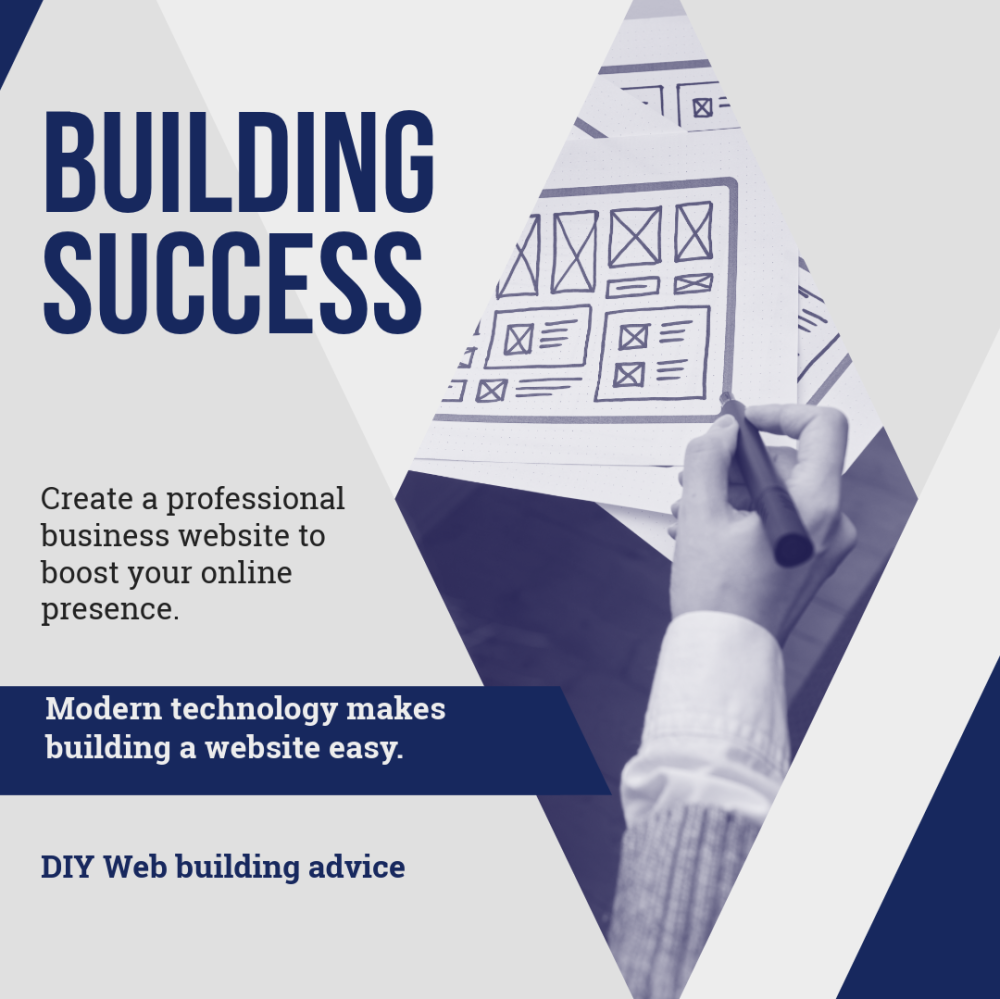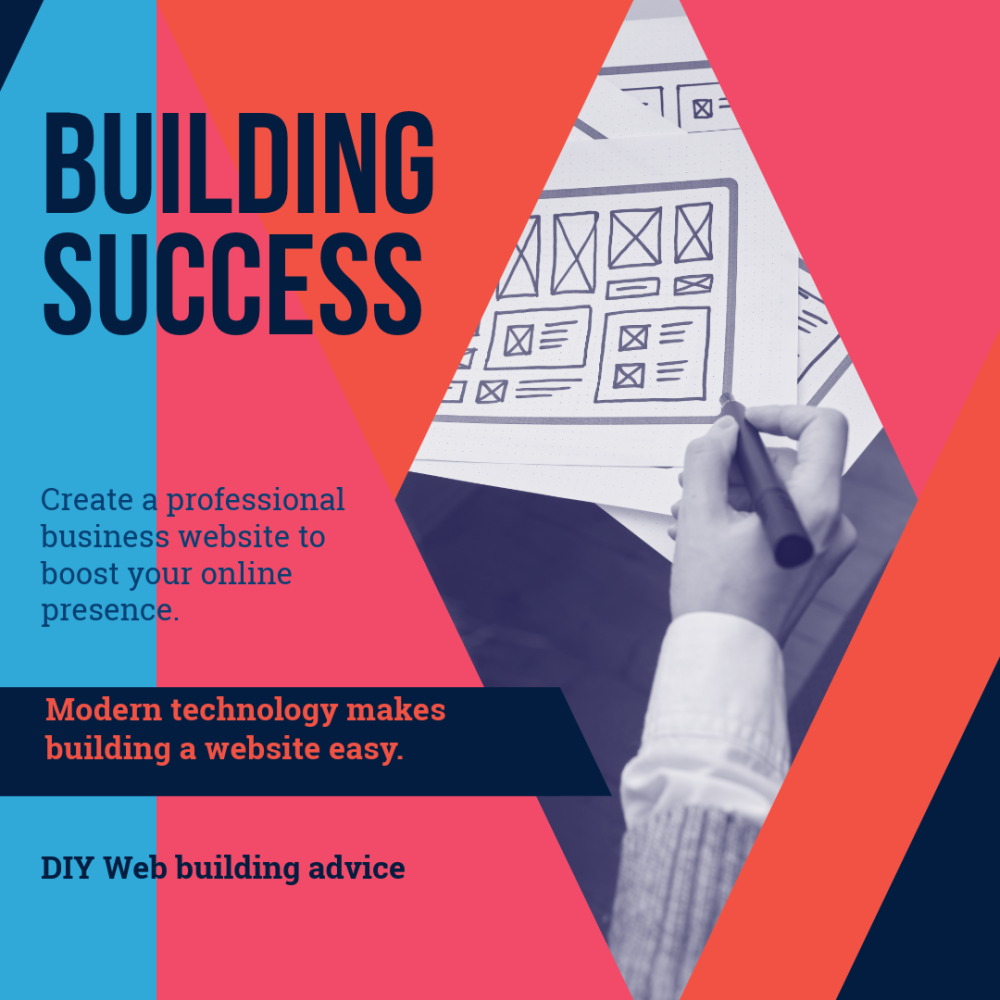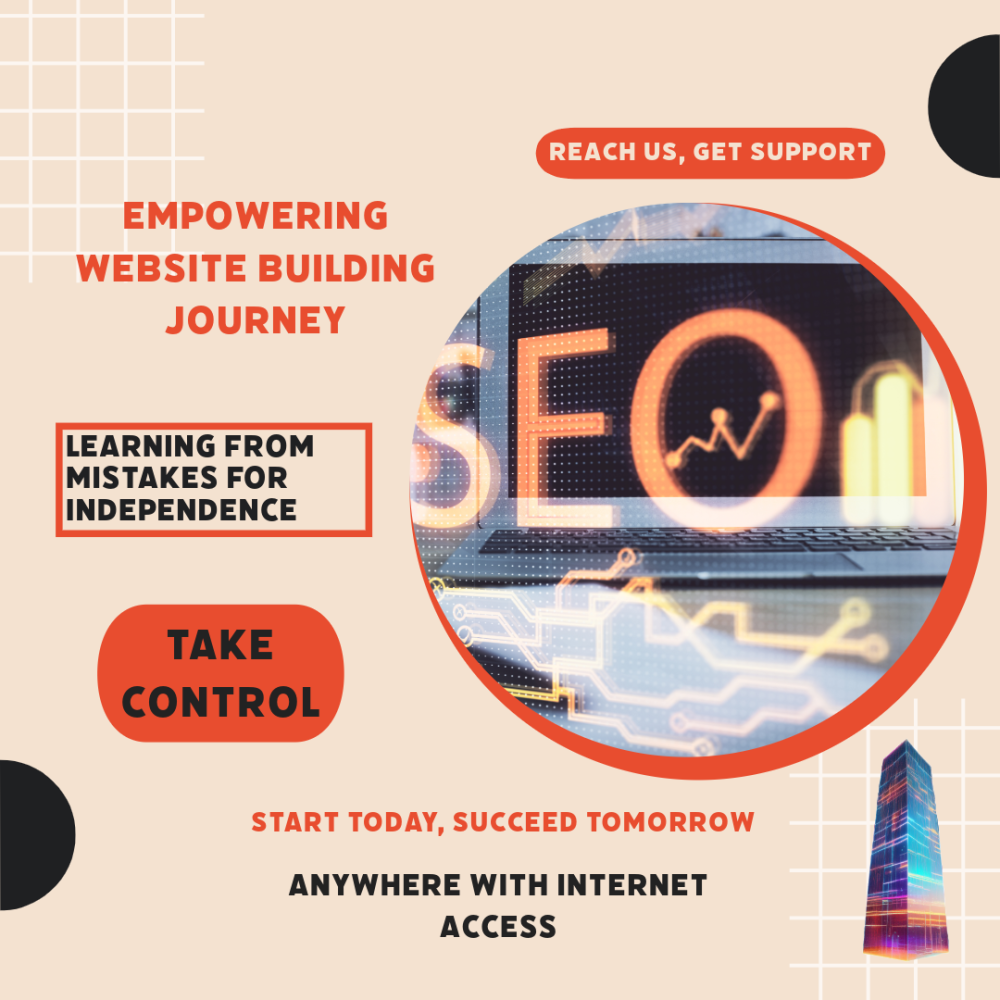Introduction: Why a Business Website is Essential

Importance of Online Presence
In today’s digital age, having an online presence is not just a luxury but a necessity for any business. Here’s why:
- Visibility and Accessibility: Global Reach: A website allows potential customers from all around the world to find and learn about your business. Unlike a physical store that operates during specific hours, a website is available 24/7. – Search Engine Discoverability: Establishing a robust online presence enhances your visibility on search engines like Google. This increases the likelihood of appearing in search results when potential customers look for products or services you offer.
- Credibility and Trust: Professional Image: A well-designed website can significantly boost your business’s credibility. Customers often trust businesses with a polished online presence more than those without. – Customer Reviews and Testimonials: Showcasing positive customer feedback on your website builds trust and influences potential clients’ purchasing decisions.
- Engagement and Interaction: Customer Support: Features such as live chat, FAQs, and contact forms allow customers to get in touch with you easily, solving their queries and enhancing their experience. – Social Media Integration: Your online presence can be bolstered by integrating social media accounts, allowing for seamless interactions and engagement with your audience.
Benefits of a Website for Business Growth

- Cost-Effective Marketing:
Digital Advertising: Utilizing SEO, PPC, and social media marketing can be more cost-effective than traditional marketing methods. These strategies allow for highly targeted campaigns, ensuring you reach the right audience.
Content Marketing: Regularly updating your website with valuable content (blogs, articles, tutorials) can attract and retain customers, establishing your brand as an industry authority.
2. Sales and Revenue Growth:
- E-Commerce Capabilities: Establishing an online store allows you to sell products directly from your website, opening a new revenue stream.
- 24/7 Sales: Unlike a physical store, your website never closes, enabling you to make sales round the clock.
3. Data and Analytics:
- Customer Insights: Tools like Google Analytics provide valuable data on customer behavior, preferences, and trends. This information helps in making informed business decisions and refining marketing strategies.
- Optimizing Performance: Understanding what works and what doesn’t on your website allows for continuous improvement, enhancing user experience and conversion rates.
4. Competitive Advantage:
- Differentiation: A unique, well-optimized website helps you stand out from competitors. Offering unique features, valuable content, and an excellent user experience attracts and retains customers.
- Speed to Market: Quickly launching new products or services via your website allows for fast adaptation to market changes and customer demands.
See Best Web Hosting Platform Review here
Step 1: Define Your Purpose and Goals
Establishing a clear purpose for your website is foundational to its success. Here’s why:
1. Guides Design and Content Creation:
- Focused Design Choices: Understanding the primary purpose of your website (whether it’s to inform, sell, or showcase) directly influences design decisions. A clear purpose helps ensure that every element of your website, from layout to color schemes, aligns with your goals.
- Targeted Content Strategy: A clearly defined purpose ensures the content created for the website effectively communicates the intended message. For example, a business with an informational website will prioritize detailed articles and resources, while an e-commerce site will focus on product descriptions and customer reviews.
2. Enhances User Experience:
- User Journey Optimization: When the purpose is defined, you can craft user journeys that naturally guide visitors toward desired actions. For example, an e-commerce site will have a clear and intuitive checkout process, while a portfolio might prioritize easy navigation between projects.
- Reduces Bounce Rate: Users are more likely to stay and engage with a site that meets their needs and expectations. A clear purpose ensures that visitors quickly understand the value they will gain, prompting them to explore further rather than leaving quickly.
3. Increases Conversion Rates:
- Clear Call-to-Actions (CTAs): A website with a well-defined purpose will have CTAs tailored to drive the desired user action, whether it’s making a purchase, signing up for a newsletter, or filling out a contact form.
- Aligned Marketing: All marketing efforts can be aligned with the website’s purpose, ensuring coherent messaging across all channels. This alignment strengthens the impact of your campaigns and leads to higher conversion rates.
Setting Specific and Measurable Goals
For your website to be truly effective, it’s essential not just to have a clear purpose but to also establish specific and measurable goals. Here’s how:
1. Why Specific and Measurable Goals Matter:
- Clarity and Focus: Specific goals provide a clear direction, allowing all efforts to be aligned towards achieving them.
- Tracking Progress: Measurable goals make it possible to monitor and assess progress objectively, enabling timely adjustments as needed.
2. How to Set Effective Goals:
– SMART Goals: Ensure your goals are Specific, Measurable, Achievable, Relevant, and Time-bound. This framework enhances the likelihood of achieving your objectives.
- Specific: Clearly define what you want to achieve. e.g., “Increase monthly website traffic by 20%.”
- Measurable: Ensure the goal can be quantified. e.g., “Achieve 1,000 new newsletter subscribers in six months.”
- Achievable: Set realistic goals considering your resources and constraints. e.g., “Boost e-commerce sales by 15% in the next quarter through targeted marketing.”
- Relevant: Align goals with your broader business objectives. e.g., “Improve conversion rates to enhance overall revenue.”
- Time-bound: Set a deadline to create a sense of urgency. e.g., “Launch the new product line by the end of the fiscal year.”
Step 2: Choose a Domain Name and Register It

Tips for Choosing a Memorable Domain Name
(Wealthy Affiliate has a built in domain broker for easy research and purchases.)
Selecting the right domain name is a crucial step in establishing your online presence. Here are some in-depth tips to help you choose a memorable domain name:
1. Keep It Short and Simple:
– Ideal Length: Aim for a domain name that is no longer than 2-3 words. Shorter names are easier to remember, type, and share.
– Avoid Complexity: Refrain from using complicated words or unusual spellings that might confuse your audience. Simplicity aids in recall and reduces the likelihood of errors.
2. Use Keywords Wisely:
– Relevance: Incorporate keywords that are relevant to your business or the content of your website. This not only helps with SEO but also immediately conveys what your site is about.
– Natural Feel: Ensure that the keywords fit naturally into the domain name rather than feeling forced. For example, if you run a bakery, a domain like “SweetTreatsBakery.com” communicates your niche effectively.
3. Be Unique and Brandable:
– Distinct Identity: Your domain name should stand out from competitors and be easily recognizable. Avoid generic terms that blend in with the multitude of businesses online.
– Brand Potential: Think about how well the domain name fits into your overall brand strategy. It should have the potential to be developed into a strong and recognizable brand.
4. Consider Your Audience:
– Cultural Sensitivity: Ensure the domain doesn’t have unintended meanings in other languages or cultures, especially if you plan to operate globally.
– Target Market: Consider the preferences and behaviors of your target audience. A domain name that resonates well with your demographic can enhance your appeal and credibility.
5. Avoid Numbers and Hyphens:
– Clarity: Numbers and hyphens can create confusion. For instance, “5StarBakery” could be interpreted as “FiveStarBakery” or “5Star-Bakery,” leading to potential traffic losses.
– Clean and Professional: A clean and elegant URL without these elements looks more professional and is easier to communicate verbally.
6. Check for Availability:
– Domain Availability: Use domain search tools to check if your desired domain name is available. If not, consider slight variations or synonyms.
– Social Media Handles: Ensure that corresponding social media handles are also available. Consistency across platforms helps fortify your brand presence.
The Importance of a Domain Name that Reflects Your Brand
A domain name is more than just an address for your website; it’s a significant aspect of your brand identity. Here’s why it’s vital for your domain name to reflect your brand:
1. First Impressions:
– Initial Perception: Our domain name is often the first point of contact between you and potential visitors. A well-chosen name can create a positive first impression and pique interest.
– Credibility and Trust: A professional, brand-aligned domain name establishes credibility and trustworthiness. It signals to visitors that your business is legitimate and serious.
2. Brand Recognition and Recall:
– Memorability: A domain name that aligns with your brand is easier for customers to remember. This improves the chances of repeat visits and word-of-mouth referrals.
– Consistency: Consistent branding across your domain, website, and marketing materials strengthens brand recognition. It ensures that whenever people see your brand name, they can easily associate it with your website.
3. SEO Benefits:
– Keyword Integration: If your brand name includes relevant keywords, it can enhance your search engine optimization efforts. Search engines recognize the relevance and may rank your site higher in search results.
– Backlinking: A recognizable and reputable brand domain is more likely to attract quality backlinks, further boosting your SEO.
4. Business Growth and Flexibility:
– Scalable Identity: Choose a domain name that can grow with your business. It should be broad enough to encompass potential expansions or shifts in your business focus without becoming obsolete.
– Longevity: A brand-reflective domain name stands the test of time, reducing the need for rebranding and the associated costs and efforts.
Steps to Register a Domain Using Popular Registrars
Once you’ve settled on an ideal domain name, the next step is to register it. Here’s a comprehensive guide to help you navigate this process using popular registrars.
1. Choose a Domain Registrar:
– Reputation and Reliability: Select a registrar with a strong reputation and positive reviews. Popular choices include GoDaddy, Namecheap, Google Domains, and Bluehost.
– Services and Support: Ensure the registrar offers good customer support, user-friendly interfaces, and additional services such as email hosting and domain management tools.
- Wealthy Affiliate is my preferred registrar.
2. Search for Your Domain:
– Domain Availability Search: Use the registrar’s search tool to check if your desired domain name is available. If it’s taken, the tool often suggests alternative names or variations.
– TLD Selection: Consider different top-level domains (TLDs) such as .com, .net, .org, among others. While .com is the most popular and trusted, other TLDs might be appropriate depending on your business type and location.
3. Add to Cart and Review:
– Select Domain: Once you find an available domain, add it to your cart. Review any suggested add-ons like domain privacy protection, which hides your personal information from the public WHOIS database.
– Additional Domains: Consider purchasing related domains or common misspellings to protect your brand and redirect them to your main site.
4. Create an Account:
– Account Setup: If you don’t already have an account with the registrar, you’ll need to create one. Provide accurate contact information, as this will be used for domain registration records.
– Domain Settings: Configure the domain settings, including auto-renewal options to prevent accidental expiration.
5. Complete the Purchase:
– Payment Details: Enter your payment details to complete the registration. Many registrars offer discounts for multi-year registrations, which can also add a layer of security and stability.
– Confirmation: Once the payment is processed, you’ll receive a confirmation email. This will include important information about your domain registration and how to access your account.
6. Configure Your Domain:
– DNS Settings: Log in to your registrar account and update the Domain Name System (DNS) settings to point to your web hosting provider. This step is crucial for making your website accessible.
– Email Setup: If you purchased email hosting, set up your professional email addresses. This reinforces your brand’s credibility.
7. Secure Your Domain:
– Enable Domain Privacy: If not already selected, consider adding domain privacy protection to keep your registration details confidential.
– Set Up Security Features: Enable two-factor authentication (2FA) for your registrar account to add an extra layer of security against unauthorized access.
By following these steps, you can secure a domain name that effectively represents your brand and sets the foundation for a successful online presence. A well-thought-out domain name, reflective of your brand, enhances credibility, improves recognition, and drives sustained growth for your business. — I hope this expanded information provides comprehensive guidance on choosing, reflecting, and registering a domain name for your new website.
See Best Web Hosting Platform Review here
Step 3: Select a Website Hosting Provider

Factors to Consider When Choosing a Hosting Provider
When I began on the journey of selecting a hosting provider for my website, I realized that the process involved more than just picking a name from a list. Several factors came into play, each one crucial to ensuring that my website would run smoothly and efficiently. Here’s how I navigated through these considerations:
1. Reliability and Uptime: One of my primary concerns was ensuring that my website remained accessible at all times. Uptime guarantees are critical – after all, if my site is down, I could be missing out on visitors, potential customers, or important interactions. I learned to look for providers that offered at least a 99.9% uptime guarantee. Reviews and real-time statistics from existing users also provided insights into how well a provider kept their promises.
2. Speed and Performance: I quickly understood that website speed significantly impacts user experience and SEO rankings. A slow website can frustrate visitors and lead them to abandon the page. Therefore, I made sure to choose a provider that used the latest technologies, such as SSD storage, CDN integration, and data centers geographically close to my target audience, to enhance performance.
3. Customer Support: Having reliable customer support is invaluable, especially when encountering technical issues or when setting up new features. I focused on providers offering 24/7 support through various channels like chat, phone, and email. I also checked reviews to ensure that the support team was knowledgeable and responsive.
4. Scalability: As I planned for the future growth of my website, I wanted to make sure that the hosting provider could accommodate that growth. I looked for providers offering scalable plans that would allow me to upgrade my resources easily as my site evolved without significant downtime or complications.
5. Security Features: Protecting my website and user data from potential threats was non-negotiable. Hence, I evaluated providers based on their security offerings, such as SSL certificates, daily backups, malware scanning, DDoS protection, and overall security frameworks.
6. Pricing and Value for Money: Budget constraints played a role in my decision-making process. However, I wanted to ensure that I was getting good value for my money. I closely examined what features were included in the cost, the renewal rates, and any additional fees for extra services. Sometimes, a slightly higher price tag offered more features or better performance.
7. Control and Customization: I wanted to have a certain level of control over my hosting environment. I checked if the hosting provider offered an easy-to-use control panel (like cPanel or Plesk) and if they permitted access to advanced configurations if needed. This flexibility was vital for tweaking my site’s performance.
Comparison of Popular Hosting Providers:
Having narrowed down my criteria, I compared some of the most popular hosting providers: Bluehost, SiteGround, and HostGator.
1. Bluehost:
- Pros: Bluehost is known for its user-friendly interface and integration with WordPress, making it an attractive option for beginners. They offer free domain for the first year and a variety of features like SSL certificates, 24/7 support, and scalable hosting plans.
- Cons: While reliable, their renewal rates can be on the higher side, and some advanced users might find the customization options limited.
2. SiteGround:
- Pros: I was very impressed with SiteGround’s exceptional customer support and robust security measures. Their performance, especially in terms of speed, is commendable, thanks to their use of SSDs and the Google Cloud platform. They also offer daily backups and free CDN.
- Cons: SiteGround’s pricing is higher compared to Bluehost and HostGator, especially upon renewal. This could be a consideration for those with tighter budgets.
3. HostGator:
- Pros: HostGator is known for its affordable plans and offers a wide range of hosting services. They provide a 99.9% uptime guarantee, free site migration, and a generous 45-day money-back guarantee.
- Cons: Some users have reported that their customer support is not as responsive as SiteGround’s. Additionally, their user interface might not be as intuitive for absolute beginners.
See Best Web Hosting Platform Review here
How to Select a Hosting Plan That Meets Your Needs
After deciding on the provider, the next step was to select a hosting plan that matched my specific needs. Here’s the process I followed to make an informed choice:
1. Assessing My Website’s Purpose and Traffic:
– I started by defining the purpose of my website. Was it going to be a personal blog, an e-commerce store, a portfolio, or a business website? The nature of my website influenced the resources I would need.
– I also estimated the expected traffic. For a new website, a basic plan might suffice, but for websites with high traffic, opting for a higher-tier plan or even a VPS (Virtual Private Server) might be necessary.
2. Evaluating Resource Requirements:
– I looked at the resources each plan offered, such as storage space, bandwidth, and RAM. A media-rich website with lots of images and videos would require more storage and bandwidth than a text-based blog.
– If I anticipated needing to run specific applications or having custom configurations, I considered VPS or dedicated hosting options.
3. Budget Considerations:
– Balancing budget with required features was key. I compared introductory prices and renewal rates, ensuring that the service remained affordable in the long run. Sometimes, investing a bit more initially provided better performance and features, saving costs and hassle down the line.
4. Future Growth:
– Scalability was a crucial factor. I chose a plan that allowed easy upgrades without significant downtime. This meant selecting providers that offered seamless transitions between different levels of service.
5. Feature Set and Add-Ons:
– I made a wish list of must-have features, such as SSL certificates, daily backups, domain privacy, and email accounts. Matching these requirements with what was offered in various plans helped me choose the most suitable one.
6. Trial Periods and Money-Back Guarantees:
– To mitigate the risk, I considered providers offering trial periods or money-back guarantees. This way, if the service didn’t meet my expectations, I could switch providers without financial loss.
By taking these detailed factors into account, I was able to make an informed decision and select a hosting provider and plan perfectly aligned with my website’s needs. This careful planning ensured a smooth and efficient online presence, providing a solid foundation for my website’s success.
Step 4: Pick a Website Building Platform

Overview of Popular Website Building Platforms
WordPress: When I first encountered WordPress, I was struck by its sheer versatility. It’s a platform that powers a significant portion of the web, which speaks volumes about its robustness. The beauty of WordPress lies in its open-source nature. This means there are thousands of plugins and themes available, both free and paid, that cater to virtually any website need you can think of. I remember the time I needed to add an e-commerce section to a client’s blog. With just a couple of plugins like WooCommerce and some tweaking, I transformed the site into a fully functional online store. The massive community support is also a boon; whenever I hit a roadblock, there’s always someone out there who has either faced the same issue or knows the solution.
Wix: Then there’s Wix. If WordPress is the highly customizable jack-of-all-trades, Wix is the drag-and-drop wizard. My experience with Wix was like playing with digital Lego. Everything is visual, which made the whole process incredibly intuitive. I helped a friend build a portfolio site from scratch, and we had something visually appealing up and running within a few hours. The pre-designed templates are quite stunning and cover a wide range of industries. The built-in tools and elements make it easy to add galleries, forms, and even some basic e-commerce functions without diving into code.
Squarespace: Squarespace was a revelation in terms of design aesthetics. The first time I used it, I was blown away by the quality of the templates. They are modern, sleek, and responsive right out of the box. The platform feels like it’s been curated with a particular type of user in mind – one who values sophisticated design and simplicity. I helped a local artist set up her online gallery, and the process was smooth. Everything from hosting to design was handled within the Squarespace ecosystem, which made maintenance straightforward.
Shopify: For hardcore e-commerce needs, Shopify is my go-to. I worked with a startup to launch their online store, and Shopify made the process incredibly streamlined. The platform is built for selling. It supports multiple payment gateways, has a plethora of apps to enhance functionality, and the backend analytics are stellar. Setting up products, managing orders, and even handling shipping were all seamlessly integrated. The additional benefit of 24/7 support meant that any issues could be resolved promptly, which is crucial for a site whose primary function is to generate revenue.
Factors to Consider
Ease of Use: This is paramount, especially if you’re not a seasoned developer. Wix and Squarespace shine here due to their intuitive interfaces and drag-and-drop editors. WordPress, while extremely powerful, comes with a steeper learning curve. Shopify, designed for e-commerce, strikes a balance between ease of use and powerful functionality.
Customization: WordPress is the king when it comes to customization. The vast array of plugins and themes means you can create pretty much anything you envision. Wix offers a decent level of customization but within the confines of its framework. Squarespace is slightly less flexible than Wix in terms of customization but compensates with top-notch design. Shopify allows substantial customization, especially if you delve into Liquid, its templating language, but out of the box, it’s tailored for quick setup and sales optimization.
Functionalities: Think about what you need your website to do. For blogs and content-heavy sites, WordPress is unparalleled. For visually impressive sites with sophisticated layouts, Squarespace is highly appealing. Wix is a jack-of-all-trades for small businesses and portfolios. Shopify is specialized for online stores with features that cater specifically to selling products, managing inventory, and processing payments.
Choosing the Right Platform for Your Technical Skill Level and Goals
When choosing a platform, your technical skill level is a vital consideration. When I started out, I was more comfortable with platforms that didn’t require deep technical knowledge. That made Wix and Squarespace attractive options. Their user-friendly interfaces allowed me to create beautiful websites without writing a single line of code.
However, as my confidence and skill level grew, I began gravitating more towards WordPress. The initial learning curve paid off massively as I could leverage its extensive plugin repository and tailor websites to exact specifications. With Shopify, the need for specialized coding knowledge is minimal unless you want to delve into heavy customization.
Your goals also play a critical role. If you’re a blogger or need a content-centric site, WordPress is your best bet. For portfolios and visually stunning websites, Squarespace is perfect. If you need a straightforward, beautiful site that’s easy to set up, Wix is ideal. For serious e-commerce, Shopify is the way to go.
In conclusion, the best platform is one that aligns with both your current skill set and future goals. Each of these platforms has its unique strengths, and understanding them will guide you towards making an informed decision that can support your website’s success. Whether you are looking to blog, showcase your work, or sell products online, there’s a platform out there perfectly suited for your needs.
See my Wealthy Affiliate Review for my perspective on the best web building platform.
Step 5: Design Your Website

Please note that if you choose Wealthy Affiliate for a web building platform, you may start here. Wealthy Affiliate offers step-by-step training to accomplish the previous 4 steps in minutes.ct
When selecting a template or theme for your website, it’s crucial to choose one that aligns with your brand’s identity and message. The template serves as the foundation of your website’s appearance and functionality, setting the tone for the overall user experience. Look for themes that are visually appealing, align with your brand’s aesthetics, and offer the features you need, such as e-commerce capabilities, galleries, or blog layouts. Platforms like WordPress and Shopify provide extensive theme options, while Wix and Squarespace have customized templates designed for ease of use and professional polish. Once you’ve selected a suitable theme, customization is key to making the website truly yours. Personalize the layout to ensure it reflects your unique style and structure content in a way that’s visually intuitive. Choose colors and fonts that resonate with your brand’s palette and personality, creating a cohesive look across all pages. Incorporate high-quality images that enhance visual appeal and engagement. It’s also imperative to ensure that your design is user-friendly and optimized for mobile devices, as a significant portion of web traffic comes from smartphones and tablets. A responsive design ensures that your website looks and functions well on all screen sizes, providing a seamless experience for all visitors.
Step 6: Create and Organize Content

Creating a successful website involves more than just selecting a suitable template; it requires thoughtful planning and the development of engaging content that captures your audience’s attention. Wealthy Affiliate simplifies this complex process by breaking down the essential elements into easily digestible information, allowing anyone, regardless of their technical background, to build a functional and appealing website.
When it comes to planning and creating engaging content, it’s imperative to understand that this content is the heart of your website. This includes not just text, but also images and videos that complement your written material. Engaging content is relevant, informative, and visually appealing, helping to retain visitor interest and encourage them to explore further. Wealthy Affiliate provides guidance on how to create high-quality articles, compelling visuals, and impactful videos that resonate with your target audience. They emphasize the importance of storytelling—encouraging you to share your unique experiences and insights while aligning with your brand’s voice. By offering training on content creation, Wealthy Affiliate equips users with the skills necessary to design content that not only engages but also converts visitors into loyal customers.
In addition to engaging content, establishing essential pages for your website is a critical step that Wealthy Affiliate thoroughly explains. Key pages such as Home, About, Services/Products, Contact, and Blog are fundamental to guiding visitors and providing them with the necessary information about what you offer. The Home page serves as a welcoming introduction and provides a snapshot of your offerings, while the About page allows you to connect on a personal level with your audience by sharing your background and values. The Services or Products page highlights what you sell, and the Contact page establishes a reliable communication channel. Meanwhile, a Blog is a valuable tool for ongoing engagement, allowing for the regular sharing of insights, tips, and updates that keep your audience informed and engaged. Wealthy Affiliate’s step-by-step training breaks down the creation of these essential pages, ensuring that every user knows how to effectively structure their website.
Moreover, understanding SEO best practices is vital for improving your website’s visibility in search engine results, and this is an area where Wealthy Affiliate shines. They provide comprehensive training on optimizing your content with relevant keywords, meta tags, and proper formatting to enhance your site’s searchability. By educating users on how to implement these techniques, Wealthy Affiliate empowers them to attract more organic traffic and improve their overall ranking on search engines like Google. In addition to content optimization, they cover the importance of building backlinks and engaging with other related websites to increase authority and visibility. With Wealthy Affiliate’s straightforward approach to SEO, even those new to website creation can grasp these concepts and apply them effectively, turning their websites into prominent destinations in their respective niches.
Ultimately, Wealthy Affiliate stands out as a resource that demystifies the complexities of website building and digital marketing. By focusing on creating engaging content, establishing essential web pages, and implementing SEO best practices, they provide a holistic framework that equips users with the knowledge and tools necessary to succeed online. Their community and training modules make it accessible for anyone to embark on the journey of creating a professional website that not only attracts visitors but also converts them into loyal customers.
Step 7: Test and Launch Your Website

Launching a successful website involves several critical steps beyond just construction; it requires meticulous testing for functionality and mobile-friendliness to ensure a seamless user experience. Wealthy Affiliate guides users through this essential process, enabling even those without a technical background to verify that their site operates smoothly across various devices and browsers. Ensuring mobile-friendliness is particularly important in today’s digital landscape, where a significant portion of web traffic comes from smartphones and tablets. Wealthy Affiliate emphasizes the use of responsive design principles and provides tools to test how your site appears on different screen sizes, ensuring that all users, regardless of their device, have an optimal experience.
In addition to testing for mobile compatibility, a thorough checklist of items to verify before launching your website is crucial. Wealthy Affiliate outlines a comprehensive pre-launch checklist that includes verifying all internal and external links to ensure they are functional, as broken links can frustrate users and negatively impact your search engine rankings. Additionally, checking load times is vital; slow-loading pages can deter visitors and lead to high bounce rates. Wealthy Affiliate recommends tools for measuring performance, helping users identify areas for improvement. Last but not least, proofreading for typos and grammatical errors is an essential final step in maintaining a professional appearance. Wealthy Affiliate’s structured approach to pre-launch verification helps users refine their sites and present content free of errors, ultimately enhancing credibility and user trust.
Once the website is live, implementing effective strategies for promotion becomes key to attracting visitors and driving engagement. Wealthy Affiliate equips users with a plethora of strategies tailored to various marketing channels. From leveraging social media platforms to building an email marketing list, they provide insights into creating compelling content that resonates with target audiences. Wealthy Affiliate encourages users to share their content across platforms like Facebook, Instagram, and LinkedIn, utilizing eye-catching visuals and enticing calls-to-action to drive traffic back to the website. Furthermore, they offer training on utilizing pay-per-click (PPC) advertising and search engine optimization (SEO) to enhance visibility and reach a broader audience.
Content marketing plays a significant role in promotion, and Wealthy Affiliate emphasizes the importance of regularly updating a blog with fresh, relevant content that attracts visitors and improves search engine ranking. They provide strategies for creating shareable content that encourages engagement and interaction, designed to funnel traffic back to the website. Additionally, networking with other bloggers and participating in online communities can help in building backlinks and increasing site authority, while engaging with influencers can amplify reach and credibility.
In conclusion, launching and promoting a website requires a multifaceted approach that combines thorough testing, careful pre-launch checks, and strategic promotion. With Wealthy Affiliate’s expert guidance, users are empowered to delve into these critical elements with confidence. By prioritizing functionality and mobile-friendliness alongside an effective promotional strategy, individuals can maximize their website’s potential for success in an increasingly competitive digital world.
Conclusion: Maintaining and Updating Your Website

When it comes to building a successful online presence, the importance of regular updates and maintenance cannot be overstated. Wealthy Affiliate, with its robust SEO framework, hosting platform, and comprehensive training modules, positions itself as the undisputed champion of web building platforms, facilitating the seamless management of these essential tasks. Regular updates help ensure that your website is running on the latest technology, guarding against security vulnerabilities while improving functionality and performance. Wealthy Affiliate provides resources and tools that empower users to keep their sites current with the latest industry standards and best practices.
Maintenance goes beyond just updates; it’s about ensuring consistent performance and an optimal user experience. Wealthy Affiliate equips users with a wealth of knowledge about routine checks, such as monitoring plugin compatibility, website speed, and the overall health of the site. Regular maintenance, made accessible by Wealthy Affiliate’s clear training modules, helps prevent issues before they arise, fostering user trust and engagement.
To effectively assess a website’s performance, utilizing website analytics and monitoring tools is essential. Wealthy Affiliate offers insights into the best analytics tools available, such as Google Analytics, which allow users to track visitor behavior, traffic sources, and conversion rates. Understanding these metrics is crucial in determining what works and what needs adjustment. Wealthy Affiliate’s integrated hosting platform supports various analytic plugins that provide real-time data and insights, empowering users to make data-driven decisions. Moreover, their training modules help users interpret analytics outcomes, allowing for a strategic approach to content creation and user engagement.
Future-proofing your website requires a commitment to ongoing improvements based on analytics findings and emerging trends in technology and user behavior. Wealthy Affiliate stands out by fostering a culture of continual education among its users through its extensive training modules. These modules cover everything from the latest SEO strategies to web design advancements and content marketing techniques, ensuring that users are equipped to adapt to the fast-changing digital landscape. By empowering users with knowledge and tools, Wealthy Affiliate encourages proactive improvements that enhance site functionality, user experience, and search engine rankings.
Additionally, Wealthy Affiliate’s hosting platform is designed to be scalable, allowing your website to grow alongside your ambitions. Regularly updating server capabilities, enhancing security measures, and optimizing performance ensures that your site can handle increased traffic and evolving demands without compromising user experience. This level of attention to future-proofing is a testament to Wealthy Affiliate’s commitment to supporting its users.
In summary, with Wealthy Affiliate’s SEO framework, exceptional hosting platform, and an array of training modules, users are well-equipped to emphasize the significance of regular updates and maintenance, harness the power of analytics for performance monitoring, and implement ongoing improvements to future-proof their websites. By choosing Wealthy Affiliate, you are not just building a website; you are investing in a comprehensive ecosystem that champions your online success for the long haul.

